Politics
Death toll from Indonesia’s Central Java landslides rises to 30
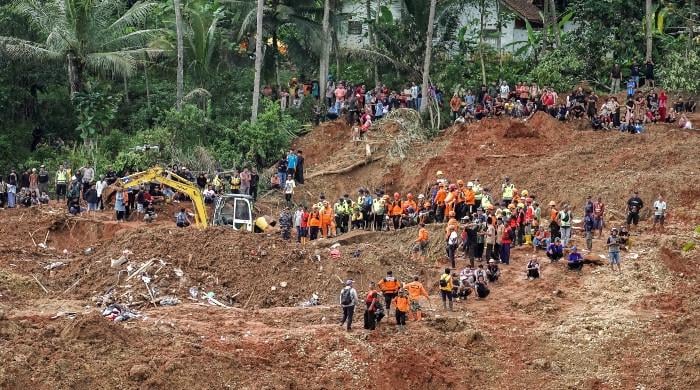

- Banjarnegara records ten dead, eighteen still unaccounted for.
- Cilacap landslides kill twenty, three people remain missing.
- Over 900 evacuated in Banjarnegara, nearly 400 in Cilacap.
JAKARTA: The death toll from landslides in two regions of Indonesia’s Central Java rose to 30 as rescue efforts continued, the country’s disaster mitigation agency said on Friday.
Some 21 people remain missing after landslides triggered by torrential rain struck the city of Cilacap last week and the Banjarnegara region over the weekend, the agency said.
Rescuers found 7 more bodies in Banjarnegara, the worst-affected area, on Thursday, bringing the death toll to 10 with 18 still missing, Abdul Muhari, the agency’s spokesperson said in a statement late on Thursday.
Dozens of houses were damaged, seven people injured, and more than 900 residents evacuated following the landslide there, Muhari said.
At least 700 rescuers including police and military personnel continue to look for the missing, using excavators to speed up the search, he added.
“We face several obstacles in the search, particularly with landslide ponds filled with debris and continuously flowing waters also risks new landslides due to rains,” Muhari said.
In Cilacap, rescuers found four more bodies this week bringing the death toll to 20 with three people still missing, Muhari said.
Authorities have extended search operations there until next week, and nearly 400 residents have been evacuated.
Indonesia’s wet season started in September and will continue until April, according to the weather agency, raising the risk of floods and extreme rainfall in many areas.
Climate change has impacted storm patterns, including the duration and intensity of the season, leading to heavier rainfall, flash flooding, and stronger wind gusts.
Flash floods and landslides in a remote area of Papua in Indonesia´s east killed at least 23 people, Muhari said.
— With additional input from AFP
Politics
Afghanistan Eyes New Trade Paths as Pakistan Ties Worsen
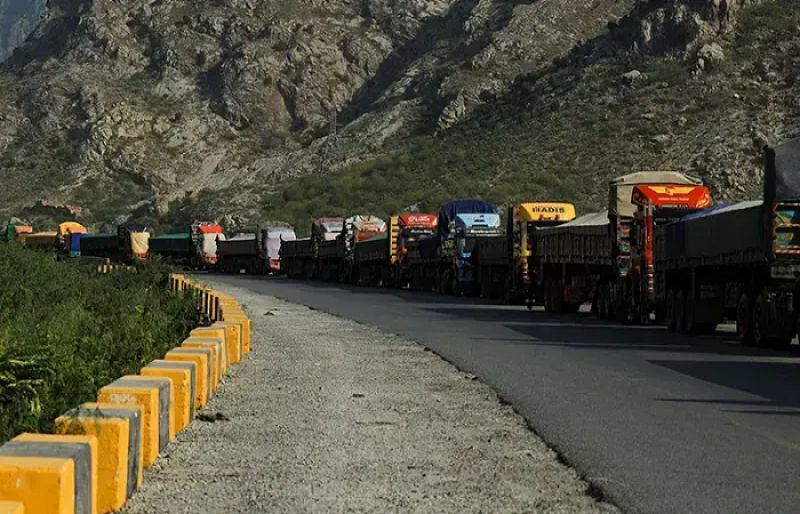

Afghanistan is racing to diversify its trade routes after a deadly border clash with Pakistan last month pushed ties to their lowest point in years, disrupting commerce and affecting communities on both sides of the frontier.
The South Asian neighbors have been embroiled in a tense dispute since the Taliban took control of Kabul in 2021, with Islamabad accusing Afghanistan of sheltering militants behind cross-border attacks—a claim the Taliban government denies.
Last week, Abdul Ghani Baradar, Afghanistan’s deputy prime minister for economic affairs, urged traders to “redirect their trade toward alternative routes instead of Pakistan.” He warned that Kabul would not intervene if businesses continued relying on Pakistani routes.
Pakistan has long been Afghanistan’s top trading partner, supplying rice, pharmaceuticals, and raw materials, while absorbing 45 percent of Afghan exports in 2024, according to the World Bank.
More than 70 percent of those exports, valued at $1.4 billion, consist of perishable agricultural goods such as figs, pistachios, grapes, and pomegranates.
The border closure on October 12, triggered by deadly cross-border fire, left dozens of Afghan trucks stranded with rotting produce.
Though a fragile truce followed, losses have already exceeded $100 million on both sides, impacting up to 25,000 border workers, according to the Pakistan Afghanistan Joint Chamber of Commerce and Industry (PAJCCI).
Facing potential future disruptions, the Taliban government is now exploring trade partnerships with Iran, Central Asia, and other markets to reduce dependence on Pakistan.
Pomegranates to Russia
Trade with Iran and Turkmenistan has jumped 60–70 percent since mid-October, said Mohammad Yousuf Amin, head of the Chamber of Commerce in Herat, in western Afghanistan.
Kabul also sent apples and pomegranates to Russia for the first time last month.
Russia is the only country to have officially recognised the Taliban administration.
Taliban leaders crave wider recognition and foreign investment, but sanctions on senior figures have made investors wary.
The vast market in India is a prime attraction. On Sunday, state-owned Ariana Afghan Airlines cut freight rates to the country of 1.4 billion people.
Two days later, Kabul sent its commerce and industry minister to New Delhi.
“Afghanistan has too many fruits and vegetables it cannot store because there are no refrigerated warehouses,” said Torek Farhadi, an economic analyst and former IMF adviser.
“Exporting is the only way,” he told AFP. And quickly, before the products spoil.
Kabul touts Iran’s Chabahar port as an alternative to Pakistan’s southern harbours, but Farhadi noted it is farther, costlier and hampered by US sanctions on Tehran.
Distraught
“It’s better for both countries to end this trade war… They need each other,” Farhadi said.
Afghanistan relies on Pakistan’s market of 240 million people and its sea access, while Islamabad wants Afghan transit to reach Central Asia for textile and energy trade.
Pakistan says the closure curbs militant infiltration, but its economy is also feeling the pinch.
In Peshawar, near the frontier, Afghan produce has all but vanished from markets.
Grapes cost four times more, and tomatoes have more than doubled to over 200 rupees (70 cents) a kilogram, an AFP correspondent found.
On Monday, the PAJCCI urged Islamabad to act, warning of mounting costs as shipping containers bound for Afghanistan and Central Asia remain stuck in Pakistan.
Each container is racking up $150–$200 in daily port charges, the group said, adding: “With thousands of containers stuck, the collective economic burden has become unbearable and continues to grow with each passing day.”
Truck driver Naeem Shah, 48, has been waiting at the Pakistani border town of Chaman with sugar and cooking oil bound for Afghanistan.
“I haven’t been paid for a month. No matter who I call, they say there is no money because the border is closed,” he told AFP. “If it doesn’t reopen, we will be distraught.”
Politics
Zelenskiy receives US plan to end war in Ukraine, will speak with Trump
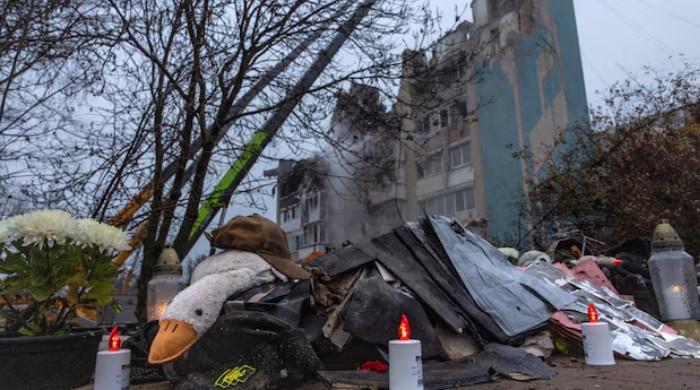
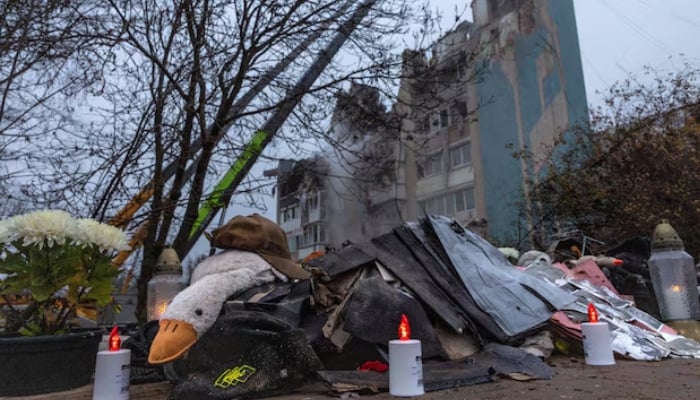
- US plan would reportedly require Kyiv to give up land.
- Kyiv would also have to accept curbs on military.
- France says peace cannot mean capitulation.
BRUSSELS/KYIV: President Volodymyr Zelenskiy has received the draft of a new US-backed plan to end Russia’s war in Ukraine and expects to have talks with President Donald Trump in the coming days, Zelenskiy’s office said on Thursday.
Two sources told Reuters on Wednesday that Washington had signalled to Zelenskiy that Kyiv must accept the US-drafted framework to end the nearly four-year-old war, which includes territorial concessions and curbs on Ukraine’s armed forces.
European countries pushed back on Thursday against the plan, which sources said would require Kyiv to give up more land and partially disarm, conditions long seen by Ukraine’s allies as tantamount to capitulation.
“We are ready now, as before, to work constructively with the American side, as well as with our partners in Europe and around the world, so that the outcome is peace,” Zelenskiy’s office said in a statement on Telegram.
Zelenskiy’s talks with Trump would include discussion of the “key points required to achieve peace”, it said.
“The President of Ukraine outlined the fundamental principles that matter to our people, and following today’s meeting, the parties agreed to work on the plan’s provisions in a way that would bring about a just end to the war.”
Trump and Zelenskiy clashed in front of television cameras in a disastrous meeting for the Ukrainian leader at the White House in March, but talks went more smoothly when he visited the White House this summer.
Video shows Russian soldiers in Pokrovsk
The acceleration in US diplomacy comes at an awkward time for Kyiv, with its troops on the back foot on the battlefield and Zelenskiy’s government undermined by a corruption scandal. Parliament fired two cabinet ministers on Wednesday.
Moscow played down any new US initiative.
“Consultations are not currently underway. There are contacts, of course, but there is no process that could be called consultations,” Kremlin spokesman Dmitry Peskov said.
He said Russia had nothing to add beyond the position President Vladimir Putin laid out at a summit with US President Donald Trump in August, adding that any peace deal must address the “root causes of the conflict”, a phrase Moscow has long used to refer to its demands.
With another winter approaching in the nearly four-year-old war, Russian troops occupy almost one-fifth of Ukraine and are poised to capture their first substantial city in nearly two years — the ruined eastern railway hub of Pokrovsk.
Video footage released by Russia’s defence ministry on Thursday showed its troops moving freely through the southern part of Pokrovsk, patrolling deserted streets lined with charred apartment blocks.
‘Peace cannot be capitulation,’ says France
European Union foreign ministers meeting in Brussels did not comment in detail about the US plan, which has not been made public, but indicated they would not accept demands for Kyiv to make punishing concessions.
“Ukrainians want peace – a just peace that respects everyone’s sovereignty, a durable peace that can’t be called into question by future aggression,” said French Foreign Minister Jean-Noel Barrot. “But peace cannot be a capitulation.”
German Foreign Minister Johann Wadephul said US special envoy Steve Witkoff had, during a phone call on Thursday, underlined “the importance of close coordination with Germany and our European partners” in talks to end the war.
The White House has not commented on the reported proposals. US Secretary of State Marco Rubio said on X that Washington would “continue to develop a list of potential ideas for ending this war based on input from both sides of this conflict”.
“…Achieving a durable peace will require both sides to agree to difficult but necessary concessions,” Rubio said.
A US Army delegation, led by Army Secretary Dan Driscoll and the Army’s Chief of Staff Randy George, was in Kyiv and expected to meet Zelenskiy late on Thursday.
They met Ukraine’s top military commander Oleksandr Syrskyi late on Wednesday. Syrskyi said the best way to secure a just peace was to defend Ukraine’s airspace, extend its ability to strike deep into Russia and stabilise the front line.
Politics
Fire disrupts COP30 climate talks as UN chief urges deal

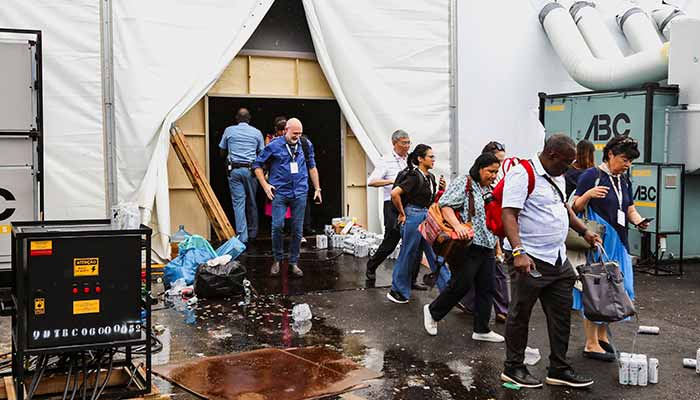
- Fire forces evacuation at negotiating venue.
- UN climate talks miss Wednesday target for a deal.
- Transition away from fossil fuels at heart of debate.
Talks at the COP30 climate summit in Brazil were disrupted on Thursday after a fire broke out in the venue, triggering an evacuation just as negotiators were hunkering down to try to land a deal to strengthen international efforts to address climate change.
United Nations Secretary-General Antonio Guterres had appealed earlier in the day for a deal from the summit, welcoming calls from some for clarity on the hotly disputed subject of weaning the world off fossil fuels.
Officials said the fire, which erupted at one of the country exhibition pavilions, had been brought under control with no injuries as security personnel ordered thousands of delegates in the sprawling building to go outside.
Brazil’s tourism minister Celso Sabino said he did not know when delegates would be able to return. Representatives for two separate negotiating teams, including the bloc representing small island states, said they left the venue awaiting instructions on when they could return.
The summit in the Amazon city of Belem, Brazil, had already missed a self-imposed Wednesday deadline to secure agreement among the nearly 200 countries present on issues including how to increase climate finance and shift away from fossil fuels.
Emissions from burning fossil fuels trap heat in the Earth’s atmosphere and are by far the biggest contributor to warming.
There are less than 48 hours until the scheduled end of the summit to find a consensus, which host nation Brazil has framed as a crucial step to ramping up international climate action and demonstrating that there is broad support to accelerate turning decades of promises and pledges from the COP summits into concrete action.
“One thing is clear, we are down to the wire, and the world is watching Belem,” Guterres said.
Fossil fuel rift
The two-week negotiation has become hung up on two issues – the future of fossil fuels and the delivery of climate finance – that expose criss-crossing fault lines between negotiating blocs from rich Western countries, oil producers and smaller states most vulnerable to climate change.
Taking their cue from Brazil, dozens of countries including both developed and developing nations have mounted a push for a roadmap setting out how countries should transition away from fossil fuels.
Others, including some fossil fuel-producing nations, are resisting.
The COP28 climate summit in 2023 agreed, after protracted discussion, to a transition, but nations have not mapped out how – or when – it will happen.
“I am perfectly convinced that a compromise is possible,” Guterres added.
Adapting to change
Another major sticking point in the negotiations is a reluctance among some richer nations to guarantee financing to help poorer countries adapt to a changing climate, according to three sources involved in the talks.
Developing countries are already deeply mistrustful of a $300 billion climate finance pledge made last year at the COP29 conference in Baku, particularly as the United States withdraws from climate cooperation under President Donald Trump.
Some existing climate finance has been directed to strange projects, including some that are funnelling billions of dollars back to rich nations, according to previous Reuters reporting.
“Right now, our people are losing their lives and livelihoods from storms of unprecedented strength which are being caused by warming seas,” said Steven Victor, Minister of Agriculture, Fisheries and the Environment for the Pacific island nation of Palau.
“If we leave Belem without a transformative outcome on adaptation for the world’s most vulnerable, it will be a failure,” he said.
European officials have said they agree adaptation financing is important, but that they were not authorised to agree to new targets.
-

 Tech6 days ago
Tech6 days agoNew carbon capture method uses water and pressure to remove CO₂ from emissions at half current costs
-

 Politics1 week ago
Politics1 week agoBritish-Pakistani honoured for transforming UK halal meat industry
-

 Business6 days ago
Business6 days agoThese 9 Common Money Mistakes Are Eating Your Income
-

 Sports5 days ago
Sports5 days agoTexas A&M officer scolds South Carolina wide receiver after touchdown; department speaks out
-

 Business6 days ago
Business6 days agoWhat’s behind Rachel Reeves’s hokey cokey on income tax rises?
-

 Sports7 days ago
Sports7 days agoApple scrapping MLS Season Pass service in ’26
-

 Tech1 week ago
Tech1 week ago$25 Off Exclusive Blue Apron Coupon for November 2025
-

 Fashion7 days ago
Fashion7 days agoAfter London, Leeds and Newcastle, next stop Glasgow for busy Omnes






